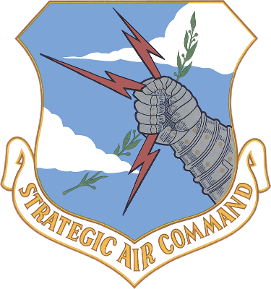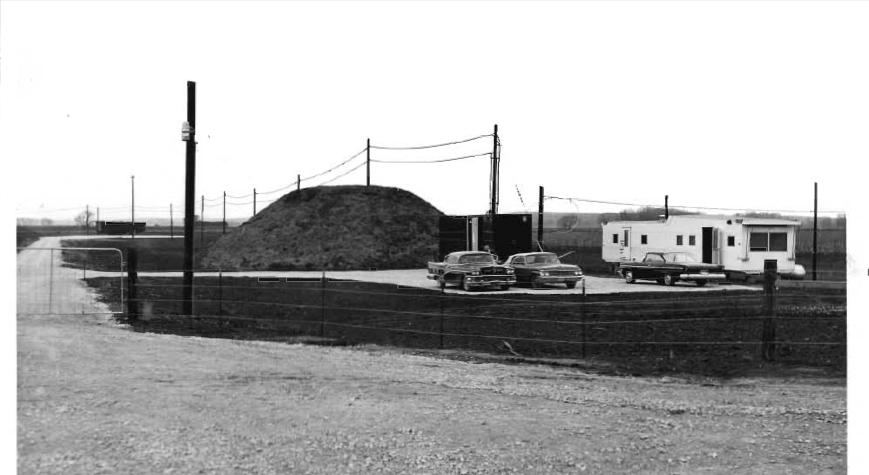Blue Scout Jr. Emergency Rocket Communications System Sites
Wisner, West Point and Scribner, Nebraska



Also known as the 279L program, Blue Scout Junior rocket sites possessed UHF transmitters that could transmit emergency war orders when other systems had failed.
The limits of high-frequency communications
Along with upgrades in low frequency communications, by 1959 the Strategic Air Command had realized the major limitations of land-line phone (later AUTOVON) and it's high-frequency communications systems. While low-frequency coped better with nuclear effects, ultra-high frequency was also nuclear resistant. While able to transmit information faster via voice (as opposed to a slow teletype with LF/VLF), UHF only worked with line-of-sight communications.
Aircraft-to-aircraft UHF communications were possible, with limitations on transmitter power and the curvature of the earth. Ground based radio antennas were not as viable due to line-of-sight issues. In years before reliable satellite communications, it was recognized that a rocket reaching high altitude could transmit a UHF message fairly reliably.
Early ICBMs such as Atlas and Titan could not be spared for the ERCS mission, as their payloads were dedicated to nuclear warheads. Minuteman would later prove to be an ideal system due to large numbers, reliability and size of payload, but a stop-gap system was sought out by SAC.
The Scout Rocket
Emerging as a small system to propel satellites into low-Earth orbit, the Scout (Solid Controlled Orbital Utility Test) system utilized a solid rocket apparently created by a modification of the Jupiter and Polaris missile systems, a second-stage coming from the Army's Sergeant missile and a third-stage a modified portion of the Navy's Vanguard rocket. Used for peaceful applications, the rocket had a successful career ending with a last launch in 1994.
The US military saw the benefits of the system, and the Air Force utilized the Blue Scout I and II as possible small satellite launchers. After some issues, the Air Force progressed to the Blue Scout Jr. variant often for experimental purposes.
279L
Effectively, Strategic Air Command would take an "off-the-shelf" system to begin it's ERCS mission. The Blue Scout Junior was selected and sites near Wisner, West Point, and Scribner, Nebraska were chosen to support the system. Unprotected from nuclear effects, the rockets would sit above ground while crews could launch the rockets via vans nearby. As Scribner also supported SAC's high-frequency net, the area northwest of Omaha, Nebraska would become a major center of SAC's communications network.
Deployment
Blue Scout, Jr. sites were deployed by 1963 to give redundancy to SAC's Emergency War Order network. In conjunction with an emerging Post-Attack Command and Control System network, 279L's UHF transmitters could help ensure orders went out during a nuclear attack and even during the trans-nuclear environment. Yet in the event of an attack on the area, the unprotected Blue Scout Junior sites could not be relied upon to launch. As the Minuteman missile program readily progressed, it had been decided to better protect the ERCS mission in protected missile silos aboard a specially selected group of Minuteman missiles at Whiteman Air Force Base, Missouri - not far from Strategic Air Command Headquarters in Omaha.
Obsolescence
After extensive testing, 494L (Minuteman ERCS) had proven successful and was soon deployed at Whiteman. A vulnerable redundancy, the Blue Scout Junior sites stood down by December 1, 1967. One of the rockets was sent to the Strategic Air Command Museum at Offutt for preservation.
Today
The original pads for the Blue Scout Junior sites have long since been claimed to history. However Project 279's contribution to communications history continues on.